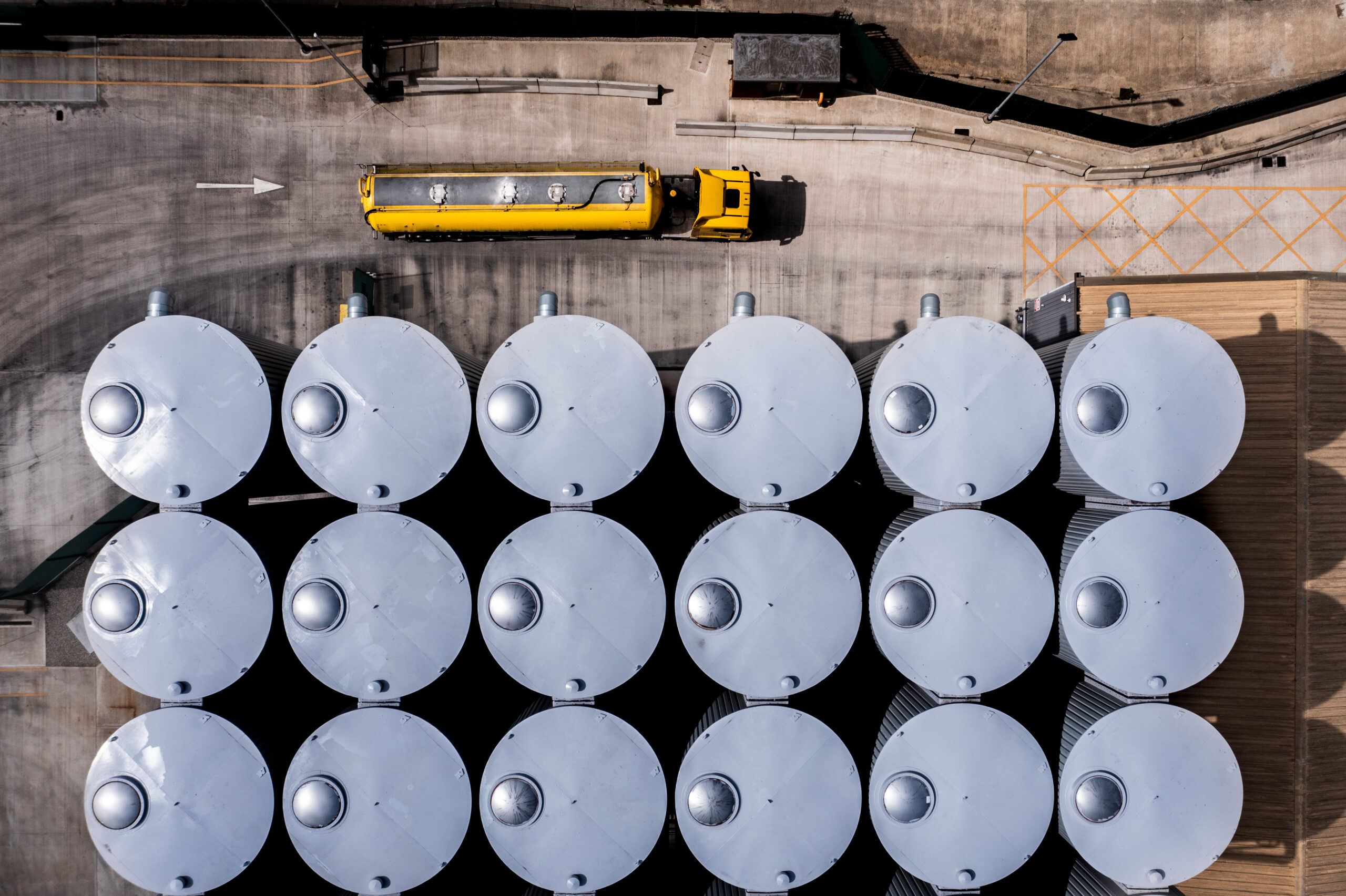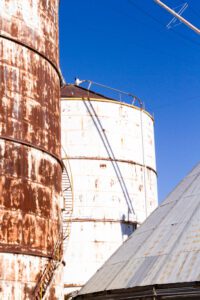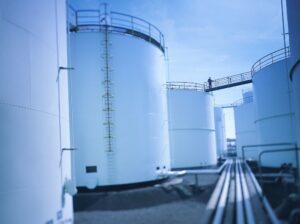Petrochemical storage tanks design play a critical role in the safe and efficient handling of petrochemicals. As such, it is important to ensure that they are designed and constructed with due care and attention.
In this article, we will discuss the optimization of petrochemical storage tank design, along with the various best practices to follow when constructing these vital components. We will look at the materials used, safety considerations and how best to optimize these designs to meet the needs of your business.
We will also explore some common challenges that may arise when designing petrochemical storage tanks and solutions for overcoming them. By following our advice, you can be sure that your storage tank design is up to scratch and meets all relevant safety standards. So let’s get started!
Materials Used for Petrochemical Storage Tanks
When designing a petrochemical storage tank, the materials used to construct it must be carefully selected. This is because any imperfections in the material can lead to structural failure and potentially dangerous leaks.
It’s important to consider several characteristics when selecting the optimal material for the job:
- Durability: The material should be able to withstand corrosive substances like acids, bases and organic solvents for long periods of time.
- Chemical Resistance: The material must also be able to resist any potential chemical reactions caused by contact with the stored liquids.
- Thermal Stability: Most petrochemicals are stored at high temperatures, so it’s important that the material is able to maintain its properties when exposed to these conditions.
- Cost: Finally, it’s important to factor in the cost of using a particular material, as this will have an impact on your overall budget.
Ultimately, you need to select a material that meets all of your requirements while being within your budget. Steel and polyethylene are common choices for petrochemical storage tanks due to their durability, resistance and cost-effectiveness. However, other materials such as stainless steel, aluminum and fiberglass may also be suitable depending on your specific needs.
Types of Petrochemical Storage Tanks: Floating Roof Tanks, Fixed Roof Tanks, Etc.
There are several different types of petrochemical storage tanks that are used in oil and gas operations, each providing a unique set of benefits and risks. The most common types include floating roof tanks, fixed roof tanks, blister tanks, and bullet tanks.
Floating Roof Tanks provide an economical way to store large quantities of oil without being exposed to the elements. The roof floats on the surface of the liquid so that it seals off the area from external air. This ensures that the temperature inside the tank is consistent and reduces emissions.
Fixed Roof Tanks are more expensive than floating roof tanks because they use a permanent structure to contain the liquid instead of relying on the surface. This type is typically used for longer-term storage of larger volumes and offers greater protection against spills or environmental contamination.
Blister Tanks are cylindrical in shape with an internal membrane between two chambers. The membrane prevents loss of vapor or liquid between chambers, making this type ideal for storing hazardous liquids and chemicals.
Bullet Tanks are typically cylindrical but feature an internal baffle wall which separates the liquid into two chambers; these are ideal for separating different products or different grades within a single tank.
By understanding the design of each type, you can make sure your facility is well equipped with an appropriate storage tank solution suited to your specific needs.
Key Factors to Consider in Petrochemical Storage Tank Design
The design of a petrochemical storage tank involves several key factors that, when done correctly, can make a huge difference in the performance, safety and longevity of the tank. Here are some of the most important considerations:
Material Selection
The material selection process is an important factor to consider when designing a petrochemical storage tank. Materials must be selected that can effectively contain the integrity desired for optimal storage and product preservation. Depending on what is being stored, this could include materials such as stainless steel and carbon steel.
Corrosion Resistance
Corrosion resistance is critical to ensure that petrochemicals remain in their desired form and do not degrade while stored in the tank. The various components used should be selected with corrosion protection properties in mind. Special coatings or linings might also be necessary, depending on the intended purpose of the storage tanks and products held within them.
Ventilation
Proper ventilation is essential to manage any pressure changes inside of a petrochemical storage tank. Without proper ventilation, air and chemical mixtures can become trapped inside, causing pressure levels to become higher than regular atmospheric pressures outside the tank and potentially leading to explosions if left unchecked.
Optimizing Petrochemical Storage Tank Design for Safety and Environmental Protection
Safety and environmental protection are two of the main areas of focus when it comes to petrochemical storage tank design. An optimized design can help reduce the risk of accident or contamination, as well as provide greater peace of mind for those responsible for care and maintenance for such tanks.
Here are some tips for optimizing your storage tank design in order to maximize safety and environmental protection:
Maintenance Accessibility
A well-designed storage tank should have easy-to-access maintenance points such as manways, drains, and sample ports. This allows for efficient inspection, operation, cleaning, and repairs.
Material Thickness
For best results, consider using dual walled or laminated storage tanks that have a minimum thickness requirement based on the stored substance. The outer wall should be designed with extra material thickness so that it can withstand external corrosion better without compromising structural integrity.
Leak Detection Systems
Installing a reliable leak detection system is critical in order to monitor any sign of leakage early on in order to reduce its impacts. These systems can detect even small changes within a system before any hazardous substances are able to escape into the environment. learn more about how to reduce storage tank leakage
Technology and Automation in Modern Petrochemical Storage Tanks
The most advanced petrochemical storage tanks now introduce various forms of automation, making them safer, maximizing storage tank efficiency and more reliable than ever before.
Automated Design
Modern tank designs are made to optimize resources, reduce costs and extend the life of the tank. For example, automated waterproofing systems can be installed to prevent seepage and maintain an even layer of insulation around the entire tank. The automated design also ensures that the tanks meet certain safety standards, including those set by relevant national or regional regulations.
Automated Monitoring
Thanks to modern technology, petrochemical storage tanks can now be equipped with automated monitoring systems that measure variables such as temperature and pressure. This makes it easier for operators to identify potential issues early on, allowing them to take action before any major damage occurs.
In addition, pre-programmed maintenance intervals enable operators to keep their tanks running efficiently without having to worry about manual inspection or maintenance procedures. This makes it easier for companies to reduce their operating costs while ensuring their tanks are up to standard.
Conclusion
In conclusion, efficient design of petrochemical storage tanks can be highly beneficial for the industry, both from a cost-saving and safety standpoint. Optimizing the design through proper planning, analysis, and selection of materials is the key to ensuring successful storage tank construction and operation. By following the best practices and guidelines outlined here, we can ensure that petrochemical storage tanks are designed in a safe and reliable manner and provide a cost-effective solution for the industry.




